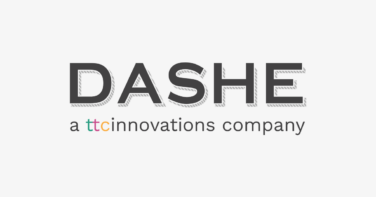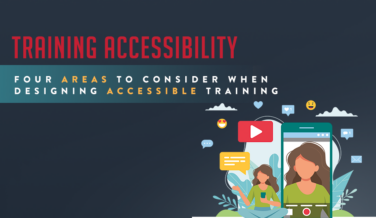Gamified Microlearning For Training: A Combined Method That Works
What Is Microlearning Gamification?
To begin, we need to understand what gamification and microlearning are on their own. After we understand what each of these are we can begin to understand what they mean once they are combined.
Gamification is incorporating games or gamelike elements to a process or procedure to encourage participation and increase engagement.
Microlearning is bite-sized information that is distributed in the right amount for the learner to process and retain, instead of overloading the learner with information that is impossible to remember all at once.
Microlearning gamification combines gamelike learning in doses that are catered to the learner. This means that the one learning or “playing” can advance at their own speed or pause when needed. It is important that the bite-size bits of information have elements of challenge, success, and reward, which is where gamification comes into play. Including a story-based game, or different achievement levels, or competitive records will increase the engagement, but it will also let each individual learn at their own speed. There will be learners who are on the highest level while others are still at the beginning, which means they learn at different speeds and retain information differently. This will also allow the trainers to know more about their trainees and how they all learn, so they can curate other lessons based on the individual.
How To Create Microlearning Gamification Trainings
- Know the needs of the organization and the employees, and their training preferences: It is important that the gamelike elements cater to the interest of the learner while meeting the expectations of the organization. Include topics of interest that will engage the individual to help them retain the information that is important to the training. Make sure at the completion of each level/section/stage and the entire lesson meets the needs of the organization and the learner.
- Keep it relevant to the real world: Having a fantasy storyline is fine, but it is highly important that it is relatable to the real world. Scenarios learners are faced with should be translatable to real world situations; transitioning from the game-like training to their positions in the organization should be fluid. The animated scenarios should be based off real life people, situations, and challenges that they might or will face once the training is complete.
- Pick appropriate incentives: These incentives can be as small or as large as you would like, but it is important that they correlate with the amount of time and effort the individual will be putting into the gamified lesson(s). Think of things that will push them to try their hardest and what will entice them to complete the training to the best of their ability. With that being said, not everything has to have a reward at the end of it, these incentives should be strategically placed and should hold value until the very end.
- Incorporate challenges and characters that are enticing: If the learner feels drawn to the characters that they are playing or challenges that they are facing there is a better chance of them remembering the skills they use within the gamified training. They need to have instances and characters that are memorable in order to apply them to the real world. When they are enticed to be a certain character or faced with an intriguing new challenge, they will be more likely to remember that when they are faced with something or someone similar in real life.
- Have a focused desired outcome: When creating this type of training it is extremely important to define your desired outcome at the beginning. This can be a certain skill that you want the trainee to learn, a certain protocol or lesson in the organization that the learner needs to know, or a rule that needs to be known throughout their time at the organization. Focus on what the learner is supposed to gain from each portion or advancement within, and then what the overall outcome should look like. If there are multiple lessons, each should have their own focus that frames around an overall outcome or goal.
- Pick a genre for each training or skill: The genre should be focused on the organization and the everyday work life of the trainee. With that being said, the genre should also be interesting and able to keep the attention of the individual, creating a desire to continue the game till the end. Make sure you are adding mystery, excitement, comedy, or an emotional trigger to keep the learner engaged at all times.
- Have a storyline: A storyline is very important in a microlearning gamification training, because there needs to be a continuous flow throughout the training. This should be a storyline that is easy for all to follow and can be picked up at any point in time. It should be memorable enough where they can go days without playing and still remember where they left off and what happened days before to get them to this point. It should also have a storyline that is interesting enough for them to want to know what the ending will be like, pushing them to completion.
- Gather feedback: This might be the most important step in any type of training, but especially in microlearning gamification. You want to make sure the outcome and lesson is being understood, and you also want to make sure each step or dose of information was retained by the learner. If they are supposed to be learning at their own speed, staying engaged, having fun, and retaining information, you want to make sure those goals are met throughout each step of the process. You also want to know where there could be improvements, and what is working for each individual and what isn’t.
Why Microlearning Gamification?
Both microlearning and gamification have demonstrated major benefits for learning retention. Combining the two will only take learning and development to the next level. They are both unique and can cater to the needs of individuals while providing an organization with the skills and knowledge that they need their employees to have. If done correctly and following the necessary steps, creating game-like trainings that can be taught in small doses and have mini sections that can be accessed on an individual’s own time and speed, can change information retention rates of learners immensely. The combination of these two will become its own learning style that can take learning and development to new levels. The statistics for each microlearning and gamification on their own are phenomenal, so why not combine these two successes and create something great!
Continue reading

Dashe joins ttcInnovations
Learn More
Embracing the Future: Early Adopters of Generative AI for Learning
Learn More
Four Areas To Consider When Designing Accessible Training
Learn MoreCommitted to
finding solutions
